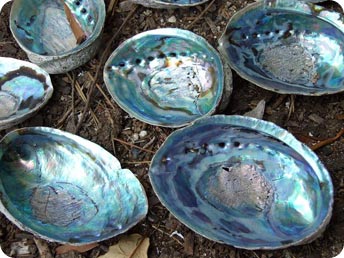130309-mother-of-pearl.jpg

Irridescent mother of pearl is both beautiful and tough. Credit: wikipedia
Just because something is beautiful doesn’t mean it can’t be tough. Consider mother of pearl -- the irridescent coating on the insides of the shells of some oysters, abalone, and other creatures. Its colorful appearance belies the fact that it’s extremely tough -- about 3,000 times stronger than its individual pieces. Scientists and engineers hope to emulate that toughness in designs for everything from body armor to artificial bones.
Mother of pearl is so tough because it’s made of alternating layers of bricks and mortar. The bricks provide strength, while the mortar adds a bit of “give” that prevents the bricks from cracking.
The “bricks” are made of a mineral that consists mostly of calcium carbonate -- the compound that makes up the shells of many sea creatures. The individual bricks grow as crystals. They’re different sizes and shapes, but they’re all much wider than they are thick -- like coins or plates.
The “mortar” is an organic material that acts as both a framework and a shock absorber. It forms wide, thin sheets. It may form first, with the bricks filling in the space between layers later on.
Scientists and engineers have been studying mother of pearl for years. And they’ve produced some compounds that mimic its structure and strength. Just last year, for example, they made an aluminum compound that’s about 300 times stronger than its individual pieces. That’s pretty tough -- but still not up to the standards of beautiful-but-tough mother of pearl.

